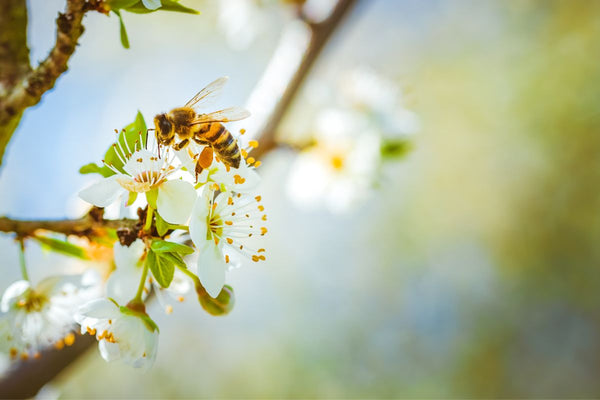
In nature's interconnected web, pollinators play a vital role as the unsung heroes that bridge the gap between flowers and bountiful blooms. These invaluable creatures, from bees and butterflies to hummingbirds and bats, diligently transfer pollen from one flower to another, enabling the fertilization process that leads to the creation of fruits, seeds, and new plants.
As they collect nectar and pollen, pollinators unwittingly facilitate cross-pollination, ensuring the genetic diversity necessary for the health and survival of plant populations. This intricate dance between pollinators and flowers not only contributes to the beauty of our natural landscapes but also plays a fundamental role in sustaining our ecosystems and food supply.
In this article, we delve into the fascinating world of pollinators and explore the ways in which they contribute to the abundance of blooms around us. From the intricate adaptations of flowers, such as shape, color, and fragrance, to the behaviors and preferences of different pollinators, we uncover the intricate mechanisms behind this symbiotic relationship. Join us as we unravel the secrets of how pollinators connect flowers and foster the bountiful blooms that shape our environment.
The importance of pollinators for biodiversity and food production
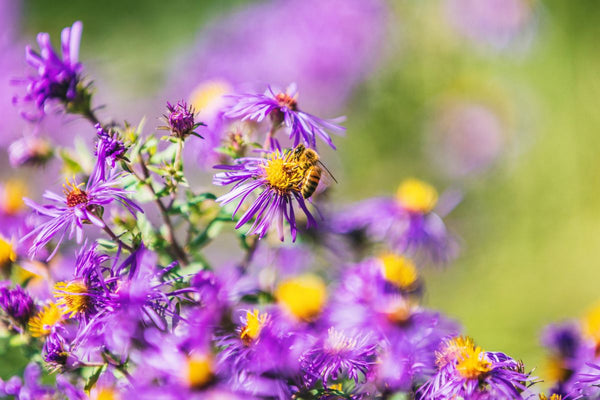
Pollinators are essential for maintaining biodiversity and ensuring food production. They are responsible for the pollination of a significant portion of flowering plants, including many crop species. Without pollinators, there would be a drastic reduction in the diversity of plant species, leading to a decline in the overall health of ecosystems.
Bees, in particular, are crucial for agricultural production. They are responsible for pollinating a wide variety of crops, including fruits, vegetables, nuts, and oilseeds. Honeybees, bumblebees, and solitary bees are all important pollinators in agricultural systems. Their pollination services contribute to higher crop yields, better fruit quality, and increased genetic diversity within plant populations.
But it's not just bees that play a role in pollination. Butterflies, moths, beetles, flies, hummingbirds, bats, and even some mammals also contribute to the pollination process. Each of these pollinators has unique characteristics and preferences, which influence their interactions with flowers and the efficiency of pollination.
Types of pollinators and their characteristics
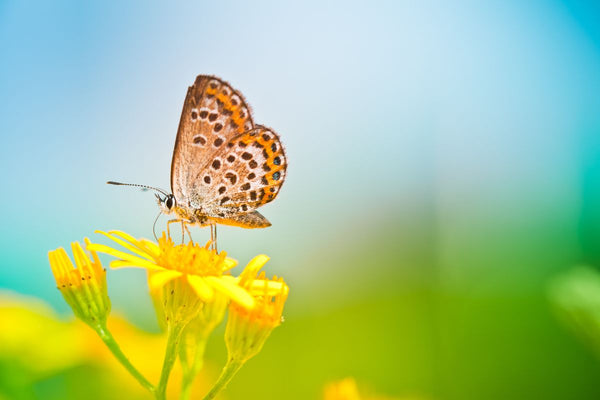
Pollinators come in a variety of shapes, sizes, and species. Bees, with their fuzzy bodies and specialized structures for collecting pollen, are perhaps the most well-known pollinators. They are highly efficient and have co-evolved with flowers over millions of years, developing specialized relationships that benefit both parties.
Butterflies and moths, with their long proboscises, are also important pollinators. They are attracted to brightly colored flowers and often have a strong preference for certain types of nectar-producing plants. These insects have a unique way of collecting pollen, with specialized hairs on their bodies that help them carry it from flower to flower.
Beetles, on the other hand, are less efficient pollinators. They are attracted to flowers with strong fragrances and tend to be generalists, visiting a wide range of plant species. While their pollination services may not be as effective as those of bees or butterflies, beetles still play a role in the pollination of certain plants.
Hummingbirds are specialized pollinators that are particularly important in the Americas. With their long, thin beaks and ability to hover in front of flowers, they are adapted to reach deep within tubular flowers. They are attracted to brightly colored, nectar-filled blooms and have a high energy requirement due to their rapid wing beats.
Bats are often overlooked as pollinators, but they play a vital role in certain ecosystems. They are attracted to flowers with pale or white petals that open at night and produce copious amounts of nectar. Bats are particularly important for the pollination of desert plants and certain species of fruits, such as bananas and mangoes.
Pollination methods used by different pollinators
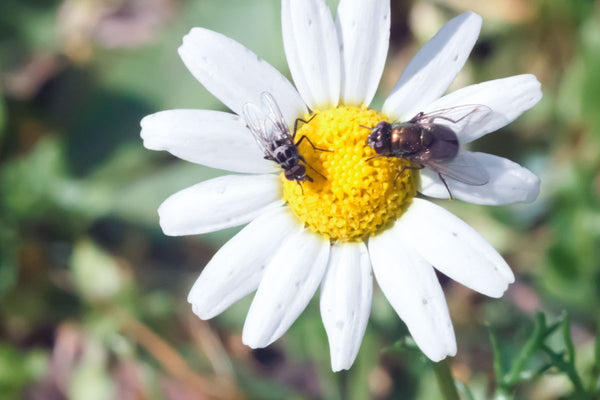
Each type of pollinator has its own unique method of pollination. Bees, for example, use a combination of physical contact and electrostatic forces to collect pollen. As they move from flower to flower, pollen grains stick to their bodies due to the electrostatic charge. Bees also have specialized structures, such as pollen baskets on their hind legs, where they store the pollen they collect.
Butterflies and moths, on the other hand, have long proboscises that they use to reach deep within flowers to access nectar. As they feed, they come into contact with the reproductive organs of the flower, transferring pollen in the process. Some butterflies also have specialized structures on their legs that help them collect and carry pollen.
Beetles, with their robust bodies, tend to be less efficient at transferring pollen. They often inadvertently pick up pollen as they crawl around flowers, rather than actively seeking it out. However, their large size and strong mandibles make them effective at breaking down flower structures and accessing nectar.
Hummingbirds have long, thin beaks that allow them to reach deep within tubular flowers. As they feed on nectar, pollen grains stick to their bills and heads, which they then transfer to the next flower they visit. Their long tongues also help them reach the nectar hidden within certain flower structures.
Bats, with their nocturnal habits, have co-evolved with certain plant species that are adapted for bat pollination. These flowers tend to be large, pale or white, and produce a strong scent to attract bats. Bats do not have specialized structures for collecting pollen but instead inadvertently pick it up as they feed on nectar.
The mutualistic relationship between flowers and pollinators
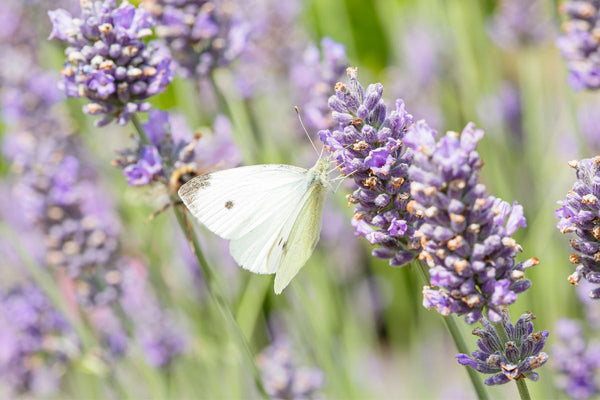
The relationship between flowers and pollinators is a mutualistic one, benefiting both parties involved. Flowers provide pollinators with a source of food, typically in the form of nectar, while pollinators unknowingly facilitate the reproduction of flowers by transferring pollen.
Flowers have evolved a range of adaptations to attract specific pollinators. These adaptations include the shape, color, and fragrance of flowers. For example, flowers that are red or purple in color tend to attract bees, while those that are white or pale attract moths and bats. The shape of flowers can also be highly specialized to match the mouthparts of specific pollinators.
In return for their food source, pollinators inadvertently transfer pollen from one flower to another, allowing for cross-pollination and the exchange of genetic material. This genetic diversity is important for the health and resilience of plant populations, as it increases their ability to adapt to changing environmental conditions.
Factors affecting pollinator populations and their implications

Unfortunately, pollinators around the world are facing numerous threats that are impacting their populations. Habitat loss and fragmentation, pesticide use, climate change, and invasive species are just a few of the factors that are contributing to the decline of pollinator populations.
Habitat loss is perhaps one of the most significant threats to pollinators. The destruction of natural habitats, such as forests and grasslands, reduces the availability of suitable nesting sites and food sources for pollinators. Fragmentation of habitats also makes it more difficult for pollinators to move between patches of suitable habitat, leading to reduced genetic diversity and increased vulnerability to extinction.
Pesticide use, particularly the use of neonicotinoids, has been linked to declines in bee populations. These insecticides can have sublethal effects on bees, affecting their ability to navigate, forage, and reproduce. Pesticides can also contaminate pollen and nectar, which can be detrimental to pollinators and their offspring.
Climate change is another significant threat to pollinators. Rising temperatures and altered rainfall patterns can disrupt the timing of flowering events, making it more difficult for pollinators to find suitable food sources. Changes in temperature can also affect the availability of specific plant species, which can have cascading effects on pollinators that rely on those plants for food.
Invasive species can outcompete native plants for resources, reducing the availability of suitable food sources for pollinators. Invasive plants may also lack the adaptations necessary for effective pollination, leading to reduced reproductive success for both the plants and the pollinators.
The decline of pollinator populations has significant implications for ecosystems and food production. Without pollinators, many plant species would not be able to reproduce, leading to a loss of biodiversity. In agricultural systems, the loss of pollinators would result in lower crop yields and reduced crop quality, potentially leading to food shortages and increased prices.
Creating a pollinator-friendly garden or landscape
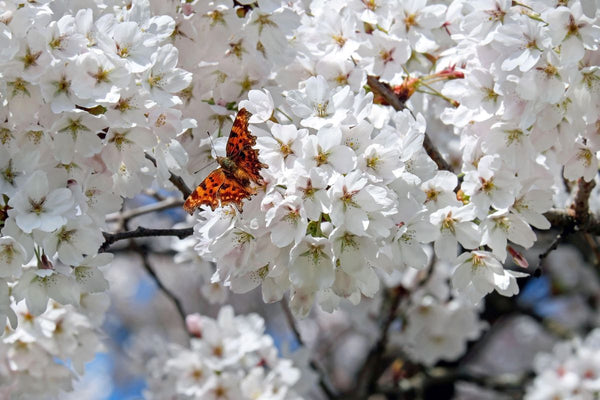
There are several steps individuals can take to create a pollinator-friendly garden or landscape. By providing suitable habitat and food sources, we can support pollinator populations and contribute to the health of our local ecosystems.
One of the most important things you can do is to plant a variety of native flowering plants. Native plants are well-adapted to the local environment and are more likely to attract and support native pollinators. Choose plants that flower at different times of the year to provide a consistent food source for pollinators throughout the seasons.
Avoid using pesticides in your garden, particularly those that are toxic to bees and other pollinators. Instead, opt for organic pest control methods or use integrated pest management techniques to minimize the impact on pollinators. If you must use pesticides, apply them in the evening when pollinators are less active, and follow the label instructions carefully.
Provide suitable nesting sites for pollinators. This can include leaving patches of bare ground for ground-nesting bees, providing nesting boxes for solitary bees, or leaving dead wood and stems for cavity-nesting bees. Providing a variety of nesting options will attract a diverse range of pollinators to your garden.
Finally, consider creating a water source for pollinators. Shallow dishes filled with water and stones or twigs for perching can provide a much-needed drink for thirsty pollinators. Make sure to keep the water source clean and change the water regularly to prevent the breeding of mosquitoes.
Supporting local pollinators through conservation efforts
In addition to creating pollinator-friendly gardens, there are also broader conservation efforts that can be undertaken to support local pollinator populations. These efforts can help to address the larger threats facing pollinators and contribute to their long-term survival.
Protecting and restoring natural habitats is critical for pollinator conservation. This can include preserving intact habitats, restoring degraded habitats, and creating new habitats through rewilding initiatives. By providing suitable nesting sites, food sources, and connectivity between habitats, we can support healthy pollinator populations.
Reducing the use of pesticides is another important conservation measure. This can be achieved through the adoption of organic farming practices, the promotion of integrated pest management techniques, and the development of alternative pest control methods. By minimizing pesticide use, we can reduce the impact on pollinators and create healthier ecosystems.
Educating and raising awareness about the importance of pollinators is also crucial. By learning about the role of pollinators in our ecosystems and food production, individuals can make informed choices and take action to support pollinators. This can include advocating for pollinator-friendly policies, supporting local conservation organizations, and participating in citizen science projects.
The role of pollinators in sustaining ecosystems and wildlife habitats
Pollinators play a vital role in sustaining ecosystems and wildlife habitats. They are responsible for the reproduction of a wide variety of plants, including many that provide food and shelter for other wildlife species. Without pollinators, the ecological balance of ecosystems would be disrupted, leading to a decline in biodiversity and the loss of important ecosystem services.
Many animals rely on the fruits, seeds, and nectar produced by plants for their survival. Birds, mammals, and insects all depend on the resources provided by flowering plants, either directly or indirectly. By facilitating the reproduction of plants, pollinators ensure a steady supply of these resources, which are essential for the survival of many species.
In addition to their role in sustaining ecosystems, pollinators also contribute to the formation and maintenance of wildlife habitats. Many plant species rely on pollinators for their reproduction, and their presence can influence the distribution and abundance of these plants. In turn, the presence of these plants can attract other wildlife species, creating diverse and thriving habitats.
Conclusion: The importance of protecting and preserving pollinators
Pollinators are vital for the health and resilience of our ecosystems and the sustainability of our food production systems. Their role in connecting flowers and fostering bountiful blooms cannot be overstated. From the intricate adaptations of flowers to the behaviors and preferences of different pollinators, the mechanisms behind this symbiotic relationship are complex and fascinating.
However, pollinators are facing numerous threats that are putting their populations at risk. Habitat loss, pesticide use, climate change, and invasive species are all contributing to the decline of pollinator populations worldwide. The loss of pollinators would have far-reaching consequences for biodiversity, food production, and the overall health of our ecosystems.
It is essential that we take action to protect and preserve pollinators. By creating pollinator-friendly gardens, supporting local conservation efforts, and advocating for pollinator-friendly policies, we can contribute to the conservation of these invaluable creatures. Through our collective efforts, we can ensure that the delicate dance between pollinators and flowers continues to shape our environment and sustain the beauty and abundance of blooms around us.
